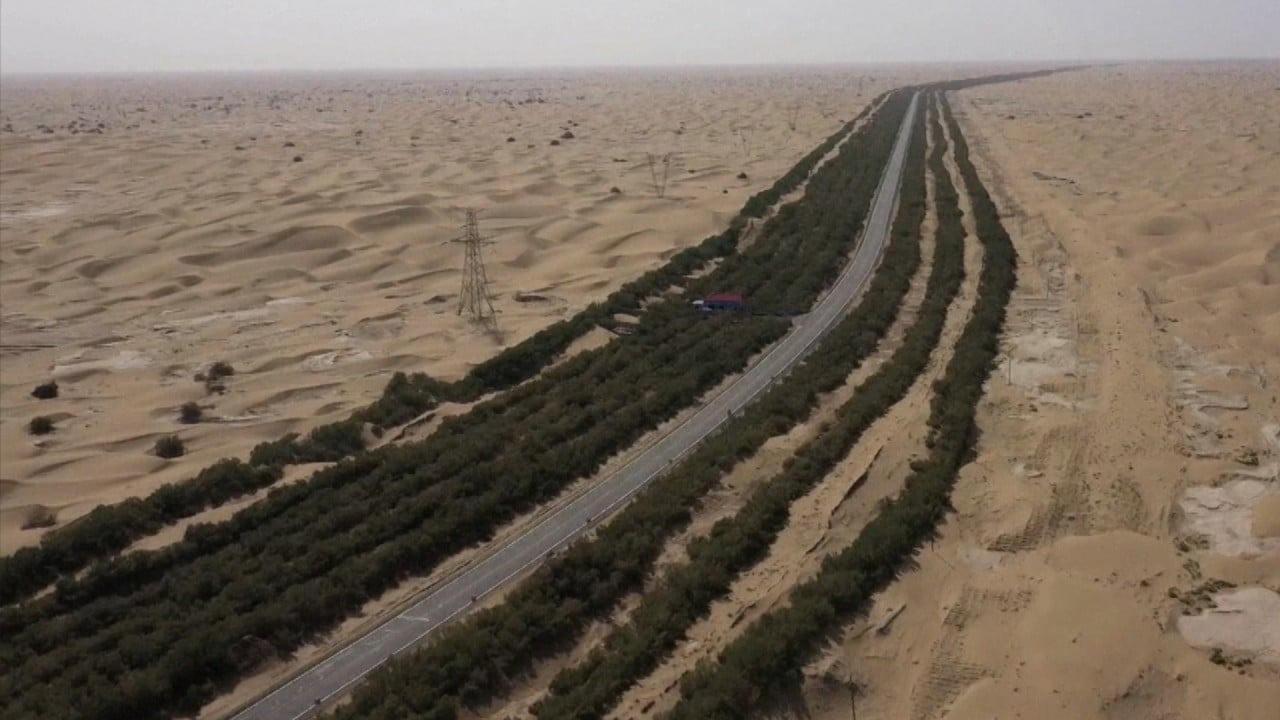China is building, by present standards, the world’s longest highway tunnel – a project that will traverse one of the planet’s longest mountain ranges and open new pathways for exchanges between the country’s Xinjiang Uygur autonomous region and Central Asia, which experts said is an increasingly decisive area for foreign trade.
A crucial section of the Urumqi-Yuli Expressway, the Tianshan Shengli tunnel will serve as a pivotal transport link between the southern and northern halves of the region, state media said.
When opened to traffic by the end of October 2025, it will cut travel time through the Tianshan Mountains to about 20 minutes, and the journey from capital Urumqi to Korla, the region’s two most populous cities, will be shortened from more than seven hours to about three hours.
The tunnel, which is expected to span a total length of 22.1km (13.7 miles) when finished, is the longest currently under construction.
“Completion will certainly benefit trade and economic growth in the underdeveloped part of Xinjiang,” said Xu Tianchen, an economist with The Economist Intelligence Unit.
As China builds closer diplomatic and economic ties with Central Asia, the region will be an increasingly important fulcrum as both a final market and a transit point, Xu added, with more infrastructure development likely in the works to boost connectivity, including the construction of the China-Kyrgyzstan-Uzbekistan railway.
But those measures were defied in the first 10 months of the year, as the region’s foreign trade hit a record high of 287 billion yuan (US$40.5 billion) according to Urumqi customs, up nearly 50 per cent from a year earlier and surpassing the cumulative total for 2022 by September.
The new pathway could diversify trade methods and even extend to further cultural and tourism exchanges
China has also attempted to leverage Xinjiang’s particular geographical advantages – notably its shared border with eight countries, including Russia, Mongolia, Kazakhstan, Kyrgyzstan, Tajikistan and Pakistan, all of which are core to China’s Belt and Road Initiative.
Enhanced transport networks would strengthen Xinjiang’s broader infrastructure links with Central Asia, said Peng Peng, executive chairman of the Guangdong Society of Reform, a think tank connected to the provincial government.
“There are already numerous channels for railways, highways and aviation, while cultural exchanges such as group tourism and self-guided travel are relatively scarce. The new pathway could diversify trade methods and even extend to further cultural and tourism exchanges,” Peng said.
Xinjiang also unveiled plans for a new free-trade hub earlier this month, a demonstration of Beijing’s ambitions to scale up its economic influence.
A pilot scheme will be employed in three parts of the region – Kashgar, Khorgos and Urumqi – and it could be up to five years before Xinjiang officially becomes a free-trade zone, according to a notice posted on the website of the State Council, China’s cabinet.


